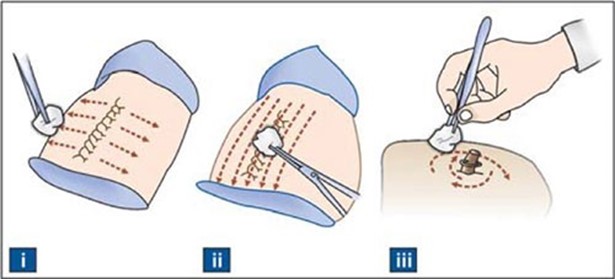A nurse assessing a client’s lung sounds hears continuous low-pitched harsh rattling sounds over the client’s trachea that are most evident on expiration and are decreased after coughing.
Which term is the appropriate choice to accurately document this lung sound?
Rhonchi.
Wheezing.
Crackles.
Pleural friction rub.
The Correct Answer is A
Rhonchi. Rhonchi are low-pitched, rattling sounds that indicate mucus in the larger airways. They are most evident on expiration and may decrease after coughing.
Choice B is wrong because wheezes are high-pitched, squeaking sounds that indicate narrowed small air passages. They are usually heard on both inspiration and expiration.
Choice C is wrong because crackles are short, high-pitched popping sounds that indicate fluid or inflammation in the alveoli. They are usually heard on inspiration.
Choice D is wrong because pleural friction rubs are creaking or grating sounds that indicate inflammation of the pleura. They are usually heard on both inspiration and expiration and do not change with coughing.
Nursing Test Bank
Naxlex Comprehensive Predictor Exams
Related Questions
Correct Answer is D
Explanation
pc stands for post cibum, which means after meals in Latin. This abbreviation indicates that a medication is to be administered after the patient has eaten.
Choice A is wrong because hs stands for hora somni, which means at bedtime in Latin. This abbreviation indicates that a medication is to be administered before the patient goes to sleep.
Choice B is wrong because prn stands for pro re nata, which means as needed in Latin. This abbreviation indicates that a medication is to be administered only when the patient requires it.
Choice C is wrong because ac stands for ante cibum, which means before meals in Latin. This abbreviation indicates that a medication is to be administered before the patient eats.
Correct Answer is D
Explanation
Cleanse from the innermost point outwards with a circular movement. This technique reduces the risk of contaminating the wound with bacteria from the surrounding skin.

Some possible explanations for the other choices are:
Choice A is wrong because hydrogen peroxide and betadine solution can damage healthy tissue and delay wound healing.
Choice B is wrong because cleansing the wound from the outer edges towards the center can introduce bacteria from the skin into the wound.
Choice C is wrong because using 4x4 gauze to the wound and surrounding skin three times can cause trauma and bleeding to the wound.
Normal ranges for pressure ulcer stages are:
- Stage I: A reddened, painful area on the skin that does not turn white when pressed.
- Stage II: The skin blisters or forms an open sore. The area around the sore may be red and irritated.
- Stage III: The skin develops an open, sunken hole called a crater or ulcer. The tissue below the skin is damaged.
- Stage IV: The pressure ulcer has become so deep that there is damage to the muscle and bone, and sometimes to tendons and joints.
Whether you are a student looking to ace your exams or a practicing nurse seeking to enhance your expertise , our nursing education contents will empower you with the confidence and competence to make a difference in the lives of patients and become a respected leader in the healthcare field.
Visit Naxlex, invest in your future and unlock endless possibilities with our unparalleled nursing education contents today
Report Wrong Answer on the Current Question
Do you disagree with the answer? If yes, what is your expected answer? Explain.
Kindly be descriptive with the issue you are facing.
